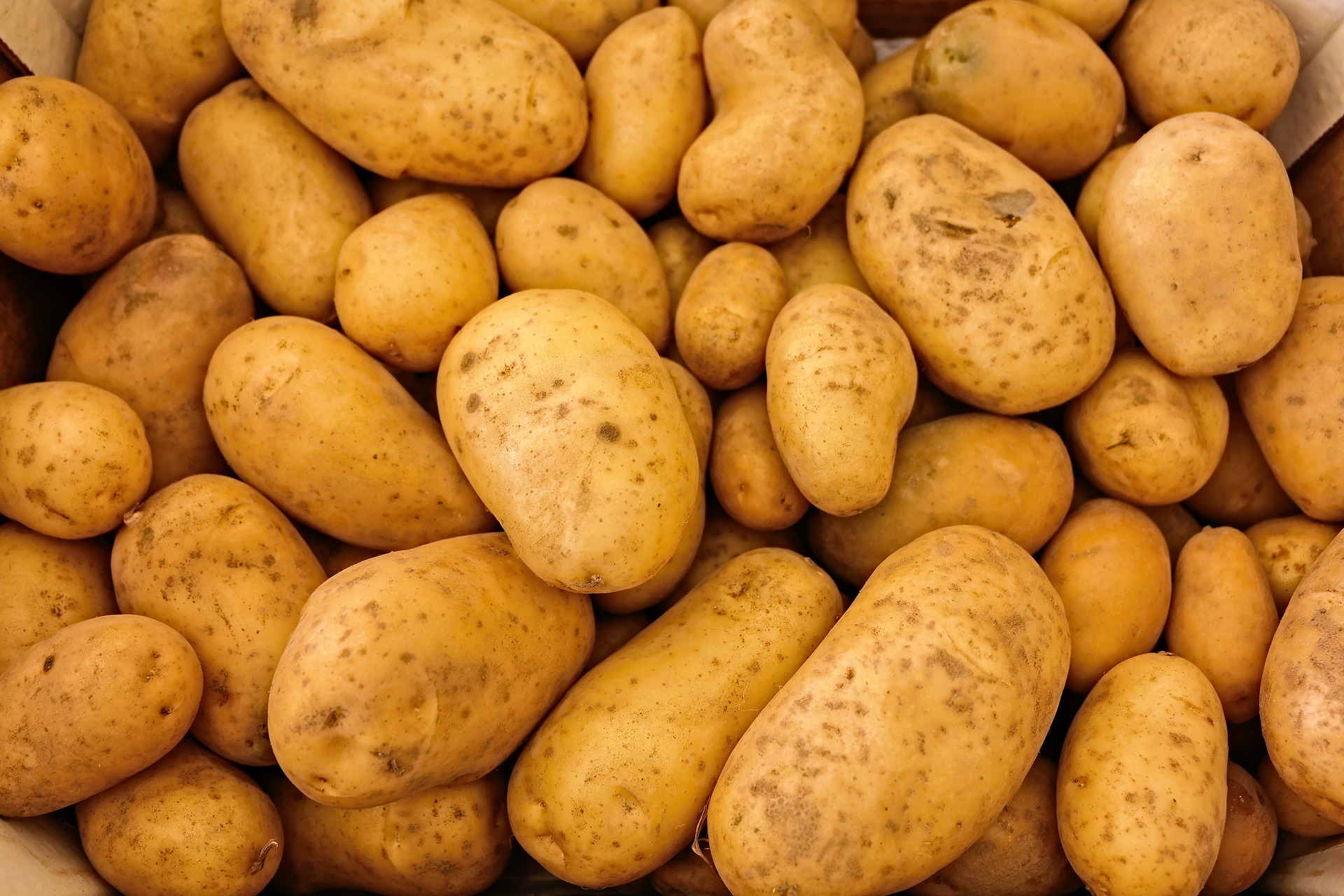Sweet potato plants will keep growing as long as the weather stays warm. The vines don’t die and signal harvesttime the way white potato vines do. If you have a long growing season, you just have to keep checking the hills and harvest the roots at the best cooking stage.
When to Harvest?
Gardeners in North Carolina, the biggest sweet potato-producing state, time their plantings so the roots will mature by late September and early October. This gives them time to harvest before the first frost, so the potatoes are in storage as the weather turns cool.
Frost and cold weather can hurt sweet potatoes at harvesttime even though you might think they’re insulated underground. When frost kills and blackens the vines aboveground, decay can start in on the dead vines and pass down to the roots. If your sweet potato plants suffer a frost one night, cut the vines off right above the soil first thing the next morning. This may let you leave the potatoes in the ground for a few more days without injury.
Try to dig the sweet potatoes on a dry, overcast day. Leaving them in direct sun for long can open pathways of infection that will damage the crop in storage. Dig gently around the hills, starting from a few feet away, so as not to slash any wandering roots with your shovel or fork.
Let Them Cure
Let the potatoes dry on the ground for a couple of hours. If you dig late in the day, don’t leave the roots out overnight; you risk damage from cold weather and moisture. Don’t wash the potatoes after the harvest, either. Sort any badly cut or bruised potatoes to eat first (they won’t keep) and sort the rest according to size in boxes or baskets to cure before storage.
Curing can be done in 10 to 14 days by keeping sweet potatoes in a warm, dark place with some ventilation. The temperature should be 80° to 85° F with high humidity. Under these conditions, bruises and wounds will heal quickly, sealing out rot organisms.
After curing, put the containers of sweet potatoes in a dry, well-ventilated area at 55° to 60° F with a relative humidity of 75 percent to 80 percent. Under ideal conditions, you can keep a mature crop until the next early harvest. If you can’t store your sweet potatoes under these conditions, you may want to cook and freeze your harvest.
Sweet potatoes bruise easily and can suffer quickly when handled in storage. It’s best not to pick through them too often.
Potato Mounds
Some gardeners in mild-winter areas build mounds, or outdoor storage houses, to store their crop. If you want to try it, here are the directions.
Find a protected spot in or near the garden. For example, near a fence or barn. Lay down 8- to 10-inches of wheat straw, then carefully pile the cured sweet potatoes in a 3- to 4-foot-tall cone or pyramid. Cover the potatoes with a thick coat of straw, followed by 2- to 3-inches of dirt. Then stack boards around the mound, fastening them at the top so they won’t blow down. The boards will keep rain from washing the dirt off and ruining the insulation.
Carefully dig into the mound for a week’s supply of potatoes at a time. Because of variable weather, you’ll probably lose some potatoes to rot, but if your harvest is generous, you’ll have plenty for eating.
Source: National Gardening Association Editors
To find local food in your area, visit Pick-A-Pepper.com
Similar Stories:
- Harvesting, Curing, & Storing Potatoes
- Is Sweet Potato a Superfood?
- Harvesting Horseradish
- 15 Vegetable Crops To Start Planting for Fall
- How To Build a Cold-Frame at Home




